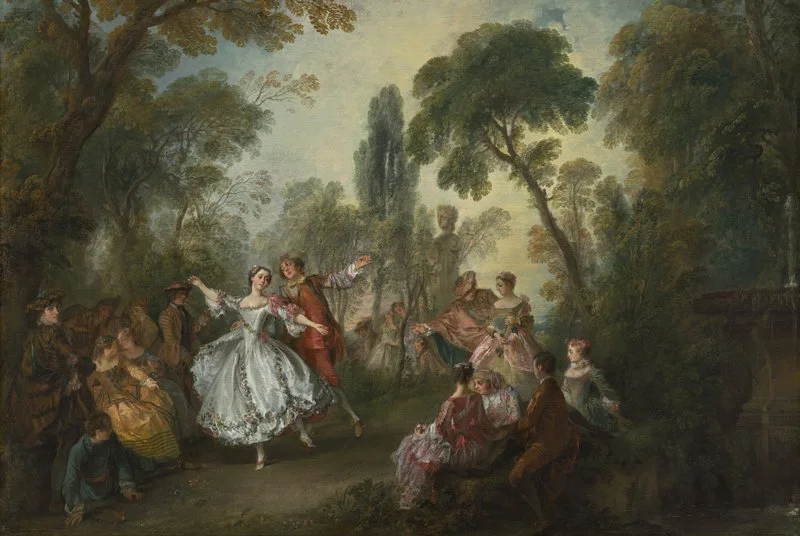Leadership Fundraising: a Sophisticated Dance
La Camargo Dancing, by Nicolas Lancret, 1730
What if the secret to unlocking your biggest fundraising success isn’t a shiny new tool or digital hack—but a technique that has been known about for centuries?
Leadership fundraising isn’t just a relic of the past; it’s a living, breathing art form that has powered some of the most transformative philanthropic campaigns of all time—and it’s every bit as relevant today.
Yet, increasingly, organisations shy away from it, preferring staff-driven tactics that feel more predictable and controllable. But that cautious choice often means leaving millions on the table.
Leadership fundraising principles
Leadership fundraising is not simply about “asking for money.” It is a nuanced, long-term endeavour grounded in cultivating a small cadre of deeply engaged donors and volunteer leaders who bring both credibility and social capital to the campaign.
What sets leadership fundraising apart—and why it has become a “lost art”—is the time and human complexity involved. Major appeals rarely happen overnight. In fact, the realistic timeline from conception to completion often spans five years or more.
During this period, organisations must carefully recruit and cultivate a board of volunteer leaders. These individuals are not simply objects to be deployed but complex human beings who need time to navigate their individual personalities and preferences, build trust, define roles, and align around a shared vision. This sometimes uncomfortable but necessary phase is where the foundation for authentic collaboration is laid. It demands patience, emotional intelligence, and skilled facilitation.
Once formed, these leaders engage in a reflective, often prolonged process of discerning their personal commitment. Stepping into a leadership role—and ultimately owning the campaign’s overall target—can involve conversations with colleagues, peers, friends, and family. Significant gifts require just as much consideration. These decisions are strategic, personal, and sometimes political. But when they’re made, they come with a level of investment and ownership that no staff-driven approach can replicate.
Crucially, as volunteers become more engaged, they begin to own the fundraising target—not simply support it. This shift is at the heart of leadership fundraising: when committed individuals adopt the goal as their own, the campaign’s reach grows geometrically—and so does its momentum. What begins as a staff-supported effort becomes a volunteer-led movement, fuelled by personal commitment, credibility, and the social capital of those involved. The role of staff is not to steer or control this, but to support and enable it—helping volunteers succeed in a challenge they’ve chosen to take responsibility for.
The fear—and the opportunity—of relinquishing control
Recently, clients, some openly, others less so, have resisted leadership fundraising techniques, viewing them as “old school” or somehow mysterious or unknowable. They prefer to stick with staff-led approaches.
For many, the idea of investing deeply in cultivating a small circle of major donors feels slow, unpredictable, and less controllable than staff-led appeals. Yet, ironically, it’s often this very hesitation that keeps organisations from reaching the transformational gifts they truly need.
No matter how skilled or dedicated, even the most talented major donor fundraisers cannot match the exponential impact generated by volunteer-led leadership fundraising. It’s the combination of trusted volunteers activating their own networks—bringing influence, credibility, and personal commitment—that unlocks giving at a scale and depth simply unreachable by staff alone.
Leadership fundraising isn’t about abandoning innovation—it’s about recognizing that some fundamentals of human connection and stewardship are timeless and irreplaceable. No algorithm, no email blast, no social media campaign can replicate the power of a trusted relationship stewarded over time.
Why Leadership Fundraising is still relevant
The payoff for embracing this art is substantial. Leadership fundraising unlocks philanthropy at a scale that staff-led campaigns rarely match. The personal engagement of volunteer leaders, the depth of relationships cultivated, and the exponential reach through their networks combine to generate transformational support.
While modern fundraising tools and digital tactics are valuable, they cannot replace the strategic influence and relational power of an engaged leadership campaign.
Transformational Impact
If you’re reading this, you likely feel the limitations of purely staff-led fundraising. You want your organisation to move beyond incremental gains toward true transformational impact.
Reclaiming leadership fundraising means committing to the long game. It means empowering volunteer leaders, embracing the complexity of human dynamics, and patiently stewarding relationships over time. It means valuing the art of fundraising alongside the science.
This lost art, once the foundation of great campaigns, remains the key to unlocking philanthropic potential that can change organisations—and communities—forever.
P.S. Who’s left to finish it?
One of the quiet, or rather unsaid, challenges to leadership fundraising today is the short tenure of fundraisers themselves. With many professionals staying in post for just a couple of years, it’s no wonder that the idea of planning a three- to five-year campaign feels daunting, even unrealistic. Is this true for you and your organisation?
That’s why I think leadership fundraising must be institutional, not individual. When it's embedded in the organisation’s culture—through strategy, governance, and shared ownership—it can outlast staff turnover and still deliver transformational results.
Until then, as long as fundraising is treated as a short-term function rather than a long-term investment, the art—and the associated returns—will remain lost to all but the most committed.
⟶ About Giles⟶ Services⟶ Back to overview